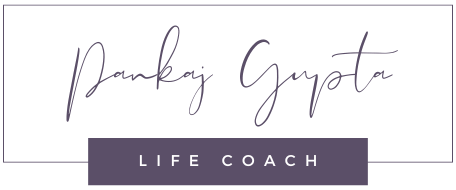People think in patterns.
They follow certain beliefs and rules without ever questioning them.
All this comes from years and decades of nurturing the same ideas and beliefs repeatedly.
Even if there are strong evidences against the beliefs, the mind sees them as exceptions, assigns justifications to them, and does not question the basis or validity of those beliefs.
Look at some illustrations where belief remains unshattered, and justification prevails when the evidence invalidates a belief.
Belief: If you produce good results, you get appreciated or rewarded.
Justification: Partiality by appraiser, vested interest, politics…
Belief: Benevolence/ kindness is reciprocated or does not return harm.
Justification: Selfishness, crookedness.
Belief: Good behaviour is reciprocated, or at least does not return bad behavior.
Justification: Something wrong with the other person, upbringing issue.
This attachment with beliefs does not let us explore what is missing that needs to be put in place.
And what is missing is never visible to the person who suffers, because it lies in the blind area of the subconscious mind.
When it becomes visible, then something can be done about it.
You come across situations where you can see that a person, who is dealing with some problem, just needs to take certain actions to resolve the problem.
But he cannot take those actions despite your convincing counseling.
Why is it so?
The reason lies in the erroneous judgments and beliefs in his subconscious mind, which makes him believe that the problem is with people, circumstances, or luck beyond his control.
This happens with many people in some areas of life.
They keep using all the reasoning to understand a problem and take well-intentioned steps to solve it, but the problem stays.
They seek help from other people, but it doesn’t produce an effective and lasting solution. This is because they cannot see the subconscious memories, which block considering simple solutions.
It requires special methods to get a glimpse of such memories, their origins, and their impacts and become free of their influences.
Subconscious mind
The last two decades have witnessed a rapidly growing awareness about the subconscious mind. Plenty of information about it is available in the form of books, videos, and podcasts. More and more people are turning their focus, from the traditional ways of achieving results, and eradicating problems and ailments, to the application of knowledge about the subconscious mind. Many methodologies have been developed to tap the secrets of the subconscious mind for the benefit of humanity. People are learning them from self-help books and videos. The rest of the article gives insights on why and when this knowledge produces and does not produce results, and what is missing that needs to be done.
Self-help books or videos, even with highest accuracy of their content, do not produce results, the way we want, in some areas of life. The reason is that we read, listen, or watch from what we already know, and what we already know is what we have in our subconscious memories, and those subconscious memories are so deep-rooted that it is very difficult to bypass them while reading, listening, or watching. So, whatever we read, listen, or watch, is laced with the existing memories, or the existing knowledge, and we miss much of its essence. All we do is strengthening our present knowledge, and adding little to it.
Our subconscious mind has overriding influence on what we think, what we do, what we are, and what we have. There is no way it can be changed by ordinary means. It requires full grasp of the new knowledge, untarnished by our existing knowledge, and work on the subconscious memories.
Having said that, different methods such as affirmations, visualizations etcetera do work, but they work only until you keep repeating those affirmations, or follow the new practices frequently. But as complacency and tiredness seep in, the practices are forgotten, and the old beliefs take over. Sometimes, one negative incident in one’s life prompts one to throw away all the new knowledge and practices. Thus, these methods do not give sustained results. However, if the affirmations resonate with the belief system stored in the subconscious mind, they work with moderate effort. But the areas which are not working and are important to us have a lot to do with our deep-rooted judgments and beliefs, and to stem them out, most of the recommended practices would not work in a sustained manner. In such cases, after repeated cycles of success and failure, people give up on their effort, and get back to their victim mode, blaming themselves, people, and situations.
The subconscious memories are not as simple as they are believed to be. Let’s take example of one single memory of a belief, or judgement. One single incident in one’s early childhood can create an erroneous belief, or judgement about oneself, others, and life. This belief forms our future judgments and opinions, and those judgments and opinions keep reinforcing that original belief. So, only one belief can be considered as a huge pile of the same belief, layered one over the other, and it has taken years and decades to make that belief as it is now.
Few individuals have the capacity to detect their own erroneous beliefs, whereas it is easy to detect errors in judgments of others. This is because an individual is conditioned to take his beliefs as true, and anything not matching his beliefs looks false.
The subconscious mind is like a child. A child creates a belief in his early age, and evaluates future situations from that belief, and makes that belief stronger. It goes on throughout his life, and this belief becomes a reality for him. Now if you try to change that belief, you need to give him tons of evidences, justifications, and reasoning to do that. And you need to sustain it continuously for a long period of time to make the new belief a reality. At the same time, you need to always be on the guard to ensure that he does not receive any evidence favoring his old belief. It is extremely tedious because the mind is wayward and continuously tries to go back to its old conditioned belief.
It gets further complicated by the fact that the child creates other beliefs, and judgments which are offshoots from the previous memories. So, erasing one belief shatters the foundation of the other beliefs, causing conflict and trauma in a person.
There is a need to understand the child in us, and how it grew to be the way he is today, how the child created erroneous beliefs, how he has been living those beliefs, how those beliefs blinkered his view of himself, others, and the circumstances, and how to free him from his past and present traumas.
This is healing of the inner child, or healing of the subconscious mind. And to do this, you don’t have to fix the external circumstances or people. It requires looking inward, observing whatever is happening to the whole body and mind. You do not have to divert attention from the memories or engage your attention on something you like – watch a movie, phone conversation, shopping, social media etcetera – as people usually do. This gives temporary respite, but the trauma returns with equal ferocity.
The permanent solution lies in bringing the trauma to the fore, looking at it impartially in its entirety, examining every detail of it, including its impact on your body and mind. This requires special meditative tools and techniques, a sharp focus, time, and practice.
To heal yourself, you need to heal the child in you. As the child begins to heal, the anger, fear, anxiety, and other emotional reactions attached with those memories start disappearing, and the adult in you starts to feel comfortable with you. You start noticing changes in people’s attitude and behaviors, and the circumstances, which were bothering you, start to disappear in mysterious ways.



Leave A Comment